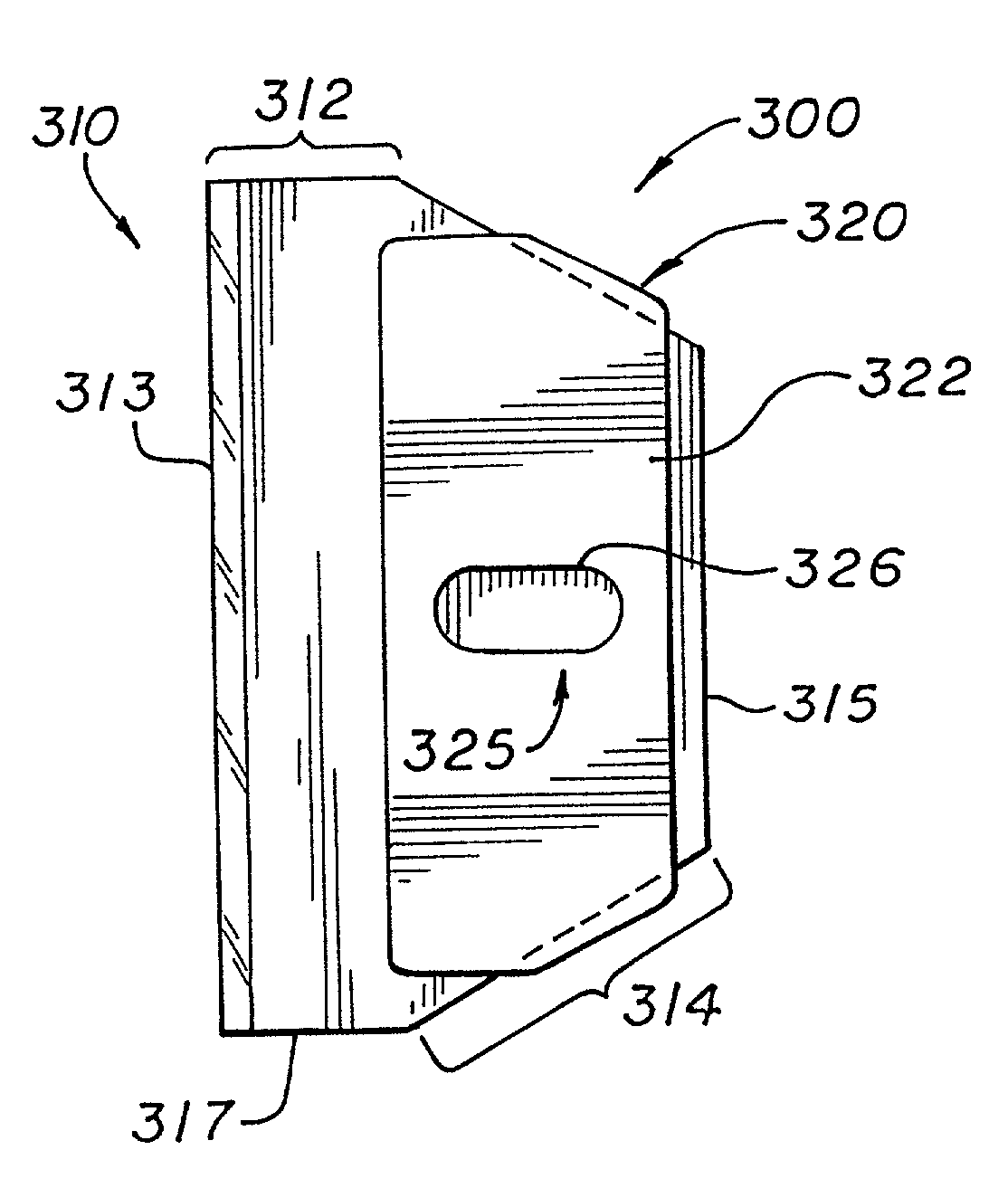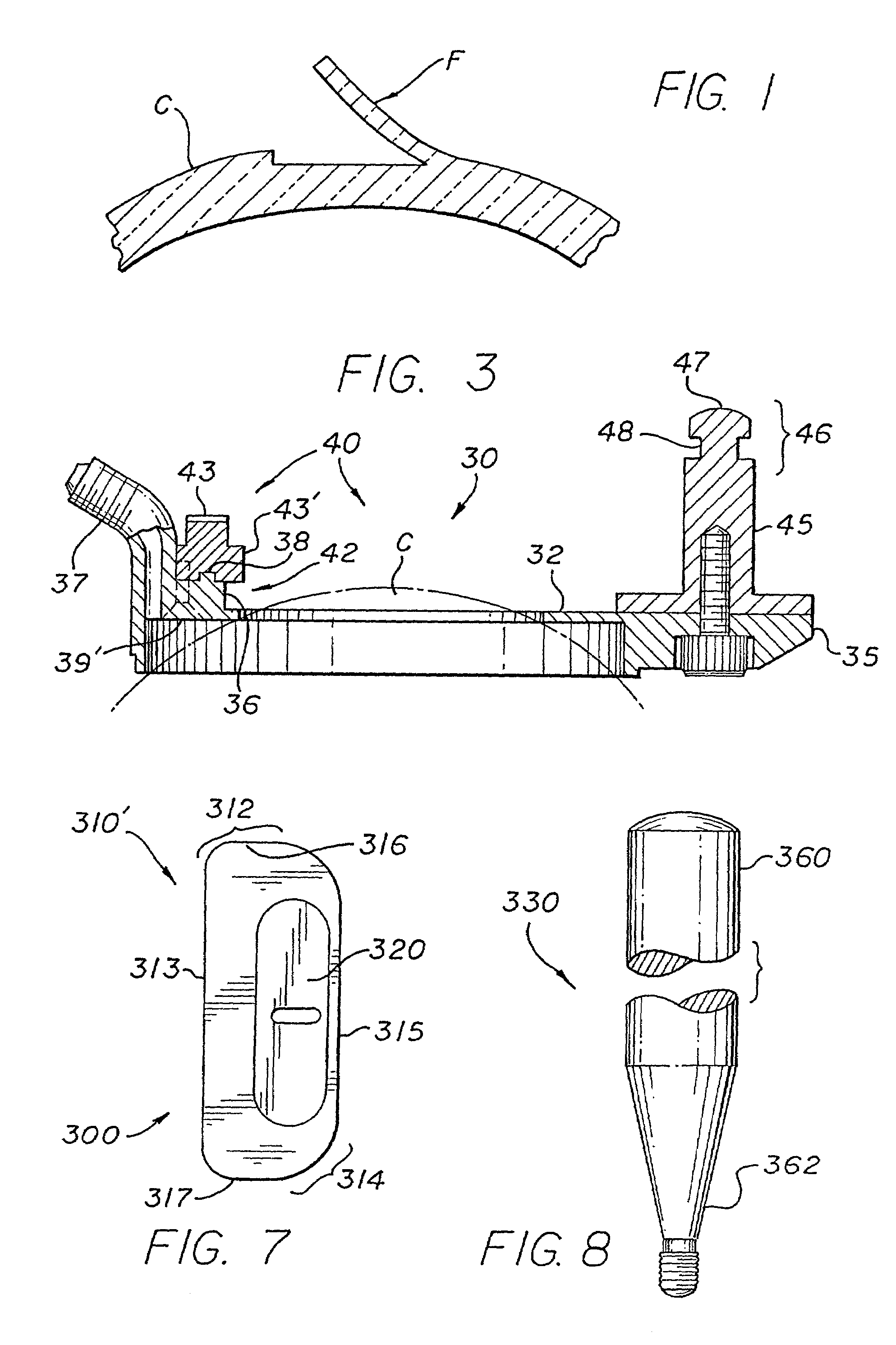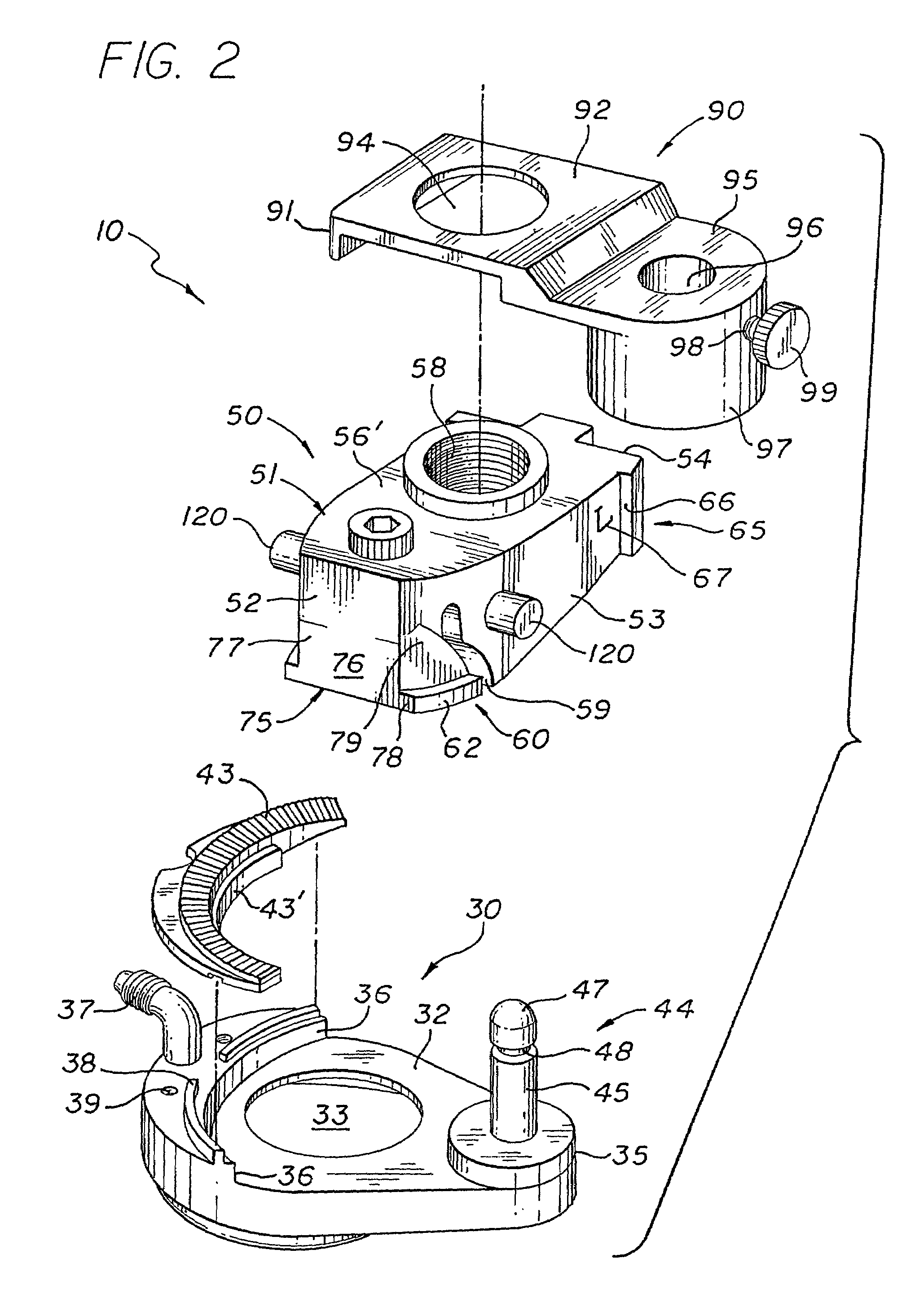Automatic surgical device and control assembly for cutting a cornea
- Summary
- Abstract
- Description
- Claims
- Application Information
AI Technical Summary
Benefits of technology
Problems solved by technology
Method used
Image
Examples
Embodiment Construction
[0037]As illustrated throughout the Figures, the present invention is directed towards an improved automatic microkeratome device for smoothly cutting the cornea of an eye, generally indicated by reference numeral 10, and towards a cutting blade assembly therefor, generally indicated by reference numeral 105, and towards a control assembly therefor, generally indicated by reference numeral 200.
[0038]The preferred and improved automatic microkeratome device of the present invention, which is structured to cut substantially but not completely across the cornea of a patient's eye so as to raise a thin layer thereof and create a hinged flap of corneal tissue, will be discussed first. As illustrated in FIGS. 2 and 3, the preferred microkeratome device 10 includes means 30 for retaining and positioning the eye on which surgery is to be performed. The retaining and positioning means 30, which may be made of high grade stainless steel, preferably comprise a positioning ring 32 having an ape...
PUM
 Login to View More
Login to View More Abstract
Description
Claims
Application Information
 Login to View More
Login to View More - R&D
- Intellectual Property
- Life Sciences
- Materials
- Tech Scout
- Unparalleled Data Quality
- Higher Quality Content
- 60% Fewer Hallucinations
Browse by: Latest US Patents, China's latest patents, Technical Efficacy Thesaurus, Application Domain, Technology Topic, Popular Technical Reports.
© 2025 PatSnap. All rights reserved.Legal|Privacy policy|Modern Slavery Act Transparency Statement|Sitemap|About US| Contact US: help@patsnap.com



